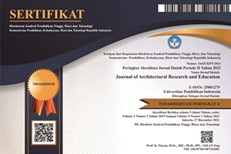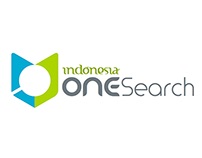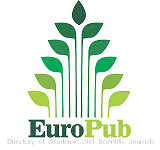FUNCTION OF PUBLIC SPACE IN CIKAPUNDUNG TERRACE AS NATURE TOURISM IN BANDUNG CITY
Abstract
Abstract:. The development of public space in urban forest areas as has been done on the Cikapundung Terrace has an influence on the improvement and structuring of the city of Bandung in other regions, as well as a great potential to become a natural tourist attraction. Since the city of Bandung, led by the mayor of Ridwan Kamil, has made rapid progress as a tourist city that has various tourist variants, such as nature tourism, culinary tourism, textile tourism etc., to have more than 100 popular city sights. In this case, the Cikapundung Terrace is one of the benchmarks, as an area within the city that has successfully transformed from a dirty and slum area that pollutes the surrounding environment into a tourist area that is popular and popular with people in and out of the city from various social strata. In the Urban Planning study approach, this phenomenon is a tangible manifestation of the efforts of the City Government to create a public space that is accommodating and well integrated and can be accessed by a large part of the urban community which is then referred to as Urban Space. This is in accordance with the City Government's vision and mission to preserve the environment based on the rules and regulations regarding Open Space.
The influence that is felt for the people of Bandung from the revitalization of the Cikapundung river is from the aspect of economic, social and healthy lifestyles, in the economic aspect, regional development such as this has succeeded in providing wider tourism opportunities that can involve local communities to develop independent business activities such as selling around the area, etc., in the social aspect, people interact more with each other in a positive and active communal space, and in the aspect of a healthy lifestyle, the community becomes motivated to contribute to advancing the region by maintaining cleanliness and environmental health.
Keyword: Public Space, Urban Space, Open Space
Abstract:. The development of public space in urban forest areas as has been done on the Cikapundung Terrace has an influence on the improvement and structuring of the city of Bandung in other regions, as well as a great potential to become a natural tourist attraction. Since the city of Bandung, led by the mayor of Ridwan Kamil, has made rapid progress as a tourist city that has various tourist variants, such as nature tourism, culinary tourism, textile tourism etc., to have more than 100 popular city sights. In this case, the Cikapundung Terrace is one of the benchmarks, as an area within the city that has successfully transformed from a dirty and slum area that pollutes the surrounding environment into a tourist area that is popular and popular with people in and out of the city from various social strata. In the Urban Planning study approach, this phenomenon is a tangible manifestation of the efforts of the City Government to create a public space that is accommodating and well integrated and can be accessed by a large part of the urban community which is then referred to as Urban Space. This is in accordance with the City Government's vision and mission to preserve the environment based on the rules and regulations regarding Open Space.
The influence that is felt for the people of Bandung from the revitalization of the Cikapundung river is from the aspect of economic, social and healthy lifestyles, in the economic aspect, regional development such as this has succeeded in providing wider tourism opportunities that can involve local communities to develop independent business activities such as selling around the area, etc., in the social aspect, people interact more with each other in a positive and active communal space, and in the aspect of a healthy lifestyle, the community becomes motivated to contribute to advancing the region by maintaining cleanliness and environmental health.
Keyword: Public Space, Urban Space, Open Space
<w:LsdEFull Text:
PDFReferences
Carmona, et. al., 2003. Public Paces - Urban Spaces, The Dimension of Urban Design. Architectural Press
Carmona, et. al., 2008. Public Spaces: The Management Dimension. New York: Taylor&Francis Group.
Ching, D.K. 2008. Bentuk, Ruang, dan Tatanan Edisi ke 3. Jakarta : Erlangga.
Hadi Sabari Yunus., 2005. Klasifikasi Kota : Klasifikasi Kota Atas Dasar Karakteristik Fungsinya.
Gist, N.P and Halbert, L.A., 1959. Urban Society. New York: Thomas Y. Crowell.
Hadi, Syul. “Ruang Publik/Public Space”. diakses dari https://syulhadi.wordpress.com/my-document/ umum/komunikasi-antarbudaya/ruang-publikpublic-space/ pada tanggal 28 Desember 2018 pukul 20.49 WIB.
Pramudito, Sidhi. “Bab II-Tinjauan Taman Rakyat Sebagai Bagian dari Ruang Publik”, Taman Rakyat di Yogyakarta. hlm. 12. diakses dari http://e-journal.uajy.ac.id/2054/3/2TA12493.pdf. pada tanggal 28 Desember 2018 pukul 21.15 WIB.
Data Teknis Sungai Cikapundung (2015), Balai Besar Wilayah Sungai Citarum, Direktorat Jenderal Sumber Daya Air, Kementerian Pekerjaan Umum dan Perumahan Rakyat.
DOI: https://doi.org/10.17509/jare.v1i1.16421
Refbacks
- There are currently no refbacks.
Copyright (c) 2019 Journal of Architectural Research and Education

This work is licensed under a Creative Commons Attribution-NonCommercial-ShareAlike 4.0 International License.

This work is licensed under a Creative Commons Attribution-ShareAlike 4.0 International License.








